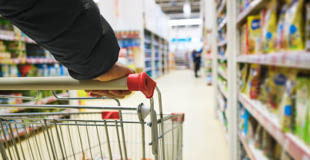Key Findings
- Target has a written safer chemicals policy and list of restricted chemicals, and was the second major U.S. retailer to announce a safer chemicals policy in 2013.
- The policy applies to the company’s “entire value chain, operations and every product” it sells, including both private-label and brand-name products. Thus far, the company has focused the implementation of the policy on household cleaning, textiles, beauty, baby care, personal care, and household cleaning products. The company has also made grants to organizations engaged in green chemistry research and safer alternatives.
- The policy includes clear goals and timeframes for reducing harmful chemicals, and the company has committed to expanding the policy to address other product categories and chemicals in manufacturing over time. In 2020, Target announced it was eliminating bisphenols in thermal receipt paper, a significant step to address chemicals of concern in its operations. The company also expanded its policy to address PFAS as a class in textiles and has begun to make progress on flame retardants in children’s car seats. Target also plans to screen for toxic chemicals that may be found in beauty products marketed to women of color.
Recommendations for Target
- Target can continue to improve its safer chemicals program by expanding the list of flame retardants restricted in textiles, expanding the scope of textiles to include foam, and expanding the list of chemicals it is targeting for elimination in textiles and formulated household goods. The company should also target chemicals of high concern in beauty products of environmental justice concern.
- As one of the largest grocery chains in America, Target should eliminate and safely replace any toxic indirect food additives that may be in food contact materials, with special attention to any bisphenols and per- and polyfluoroalkyl substances (PFAS) that may be in food packaging and other food contact materials as well as any phthalates that may be in food and food contact materials in its supply chain. The company should also eliminate plastics of environmental health concern (PEHCs) from its product and packaging materials in line with the timeline it has set for itself. Target should publicly disclose the alternatives used to replace CHCs or PEHCs after eliminating them.
- Over time, the company should also expand its policy to address other chemically intensive product categories such as electronics, baby, and children’s products/toys.
Grade History
How does Target compare to its competitors?
Analysis of Target
Oversight: Established management responsibilities and incentives
Disclosure: Requires suppliers to report use of chemicals in products to retailer
Action: Reduced or eliminated chemicals of high concern (CHCs) or plastics of environmental health concern (PEHCs) within the last three years
Safer Alternatives: Evaluates safer alternatives, avoids regrettable substitutes
Transparency: Demonstrates a commitment to transparency and public disclosure
Third-party Standards: Promotes credible third-party standards for safer products
Extra Credit:
Joint Announcement: Public commitment demonstrated through joint announcement
Continuous Improvement: Shows continuous improvement by steadily expanding safer chemicals policy
Collaboration: Actively participates in collaborative process to promote safer chemicals
Impact Investment: Investing financial resources into independent research into safer alternatives and/or green chemistry solutions


